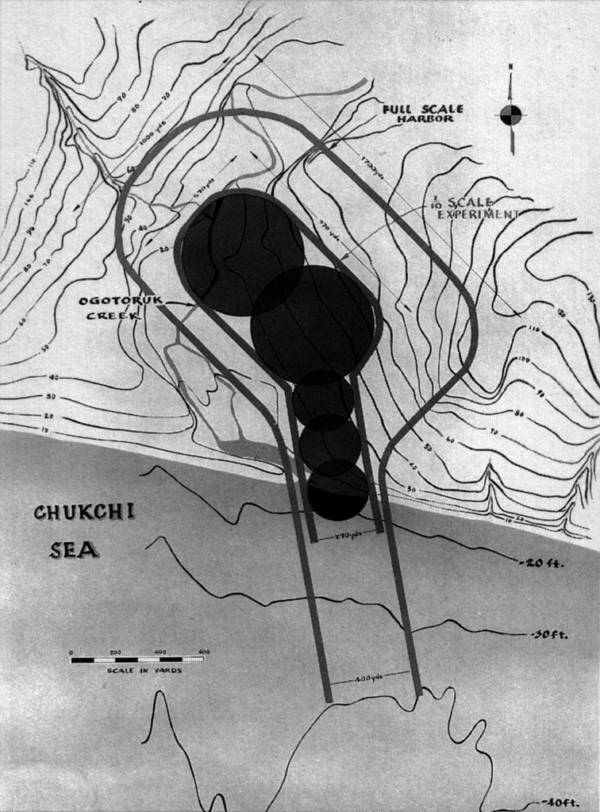Project Chariot: The U.S. Government’s Plan To Nuke Alaska

Wikimedia CommonsThe plans for Project Chariot.
It wasn’t just the Moon that the U.S. military considered nuking — far from it. In fact, for a time, it seemed like the United States was a little too quick to resort to nuking any issue it faced. Take, for example, Project Chariot, a plan to detonate nuclear explosives in Alaska to create a manmade harbor.
The plan was devised in 1958, one year before Alaska reached statehood, as part of a larger initiative known as Operation Plowshare. Essentially, Operation Plowshare sought to investigate alternative uses for nuclear weapons — so, anything other than killing people, really. As part of this initiative, the goal of Project Chariot was to use five thermonuclear explosions to create a new deep-water port on the Chukchi Sea in the hopes of boosting the economy by making it possible to export coal during the three months of the year when the nearby water wasn’t frozen.
It didn’t take long for the plan to receive pushback. Activists, scientists, and locals all took issue with the proposal. The locals, many of whom still lived in sod houses and spoke Inupiat, worried that the explosions would obliterate their way of life. They largely hunted caribou and caught fish and whales — all of which would be majorly disrupted if nuclear blasts were set off.
The larger scientific community also criticized Project Chariot, with one report from the Atomic Energy Commission even saying that it would be a “great stretch of one’s imagination” to try and predict the outcome of a hypothetical nuclear explosion on the Chukchi Sea.
By 1962, Project Chariot was dead in the water. The U.S. military did still perform tests on the effects of radioactivity on the soil in Alaska, which was discovered in the early 1990s and led to a 20-year clean-up effort.





